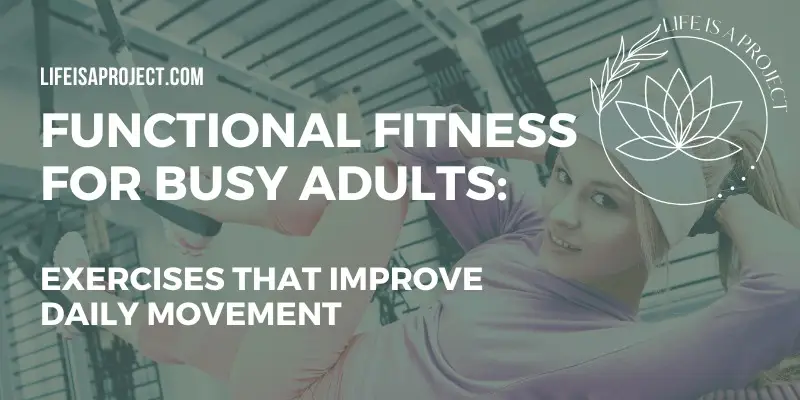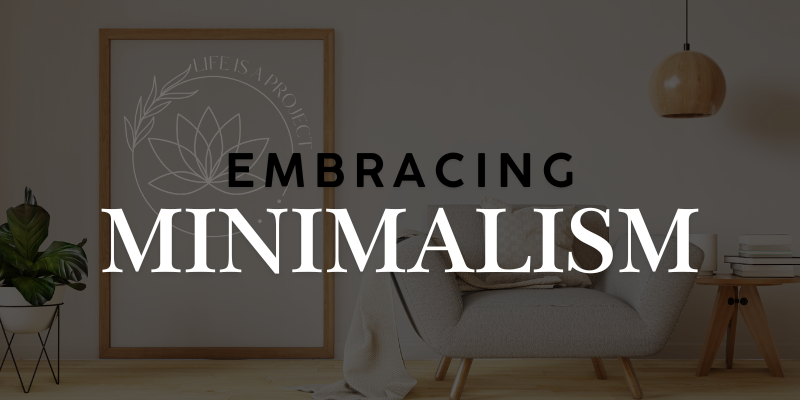When you think of fitness, you might picture intense workouts, fancy gym equipment, or long hours of sweating it out. But there’s another, more practical side to staying fit that’s all about making everyday life easier and more comfortable: functional fitness.
It’s not just about lifting the heaviest weights or running the fastest miles; it’s about improving the way your body moves in daily activities—like lifting grocery bags, playing with your kids, or even just getting up from a chair without groaning.
Let’s dive into functional fitness routines designed specifically for busy adults, focusing on exercises that boost strength, mobility, and overall ease of movement.
What Is Functional Fitness?
Functional fitness focuses on exercises that mimic the movements you do in real life. It’s about training your muscles to work together, rather than isolating them with single-movement exercises. Think of it as fitness with a purpose—it helps improve your balance, coordination, strength, and flexibility, making everyday tasks easier and reducing the risk of injury.
Whether you’re a desk jockey, a parent, or just someone trying to stay active without spending hours at the gym, functional fitness is all about making your body more capable and resilient in your daily routine.
Why Functional Fitness Matters
Functional fitness routines prioritize movements that engage multiple muscle groups and mirror the way you move in everyday life. Here’s why that matters:
- Improves Daily Activities: From bending to tie your shoes to reaching for something on a high shelf, functional fitness makes everyday tasks easier.
- Reduces Risk of Injury: By focusing on balance, stability, and mobility, functional exercises help prevent common injuries, especially those caused by repetitive movements or sudden actions.
- Boosts Efficiency: These exercises often combine strength and cardio, providing a more efficient workout that saves time—perfect for busy schedules.
- Enhances Quality of Life: By improving your overall movement patterns, functional fitness can help you feel more energetic, capable, and ready to take on whatever life throws your way.
Functional Fitness Exercises for Busy Adults
Ready to incorporate functional fitness into your routine? Here are some effective exercises that can be done at home, with minimal equipment, and are tailored to fit even the busiest of schedules:
1. Squats
Squats are a powerhouse when it comes to functional fitness. They mimic movements like sitting down and standing up, picking things up from the floor, and other daily actions that require lower body strength.
- How to Do It: Stand with your feet shoulder-width apart, toes slightly pointed out. Lower your body as if sitting back into a chair, keeping your chest up and your knees tracking over your toes. Push through your heels to return to standing.
- Quick Tip: Start with bodyweight squats and, as you get stronger, add resistance with dumbbells or a kettlebell.
2. Lunges
Lunges are excellent for improving balance, coordination, and leg strength—all crucial for daily movements like climbing stairs or stepping over obstacles.
- How to Do It: Step forward with one leg and lower your body until both knees are bent at a 90-degree angle. Keep your torso upright and push through the front heel to return to standing. Alternate legs.
- Quick Tip: For added challenge, hold weights in each hand or do walking lunges across a room.
3. Planks
Planks are a full-body exercise that builds core strength, which is essential for stability and supporting your lower back in everyday tasks.
- How to Do It: Start on your hands and knees. Extend your legs back to form a straight line from head to heels, keeping your core tight and hips level. Hold this position, making sure not to let your hips sag or rise.
- Quick Tip: If a full plank is too challenging, modify by keeping your knees on the ground. Aim to hold the plank for 20-30 seconds, gradually increasing the time as you get stronger.
4. Deadlifts
Deadlifts mimic the motion of picking things up from the ground—a movement most of us do daily. They strengthen your posterior chain (back, glutes, and hamstrings) and improve overall body mechanics.
- How to Do It: Stand with feet hip-width apart and hold a weight (like a dumbbell or kettlebell) in front of you. Hinge at your hips, keeping your back flat and knees slightly bent, and lower the weight towards the ground. Return to standing by pushing through your heels and engaging your glutes.
- Quick Tip: Start with lighter weights to ensure proper form and gradually increase as you build strength.
5. Push-Ups
Push-ups are a classic functional exercise that strengthens the upper body and core, preparing you for movements like pushing a heavy door or lifting a heavy object.
- How to Do It: Start in a plank position with hands slightly wider than shoulder-width. Lower your body by bending your elbows, keeping your core tight and body in a straight line. Push back up to the starting position.
- Quick Tip: Modify push-ups by starting on your knees or doing them against a wall to build up strength.
6. Glute Bridges
Glute bridges are fantastic for activating your glutes and improving hip mobility, which is crucial for movements like standing up from a chair or climbing stairs.
- How to Do It: Lie on your back with knees bent and feet flat on the floor, hip-width apart. Lift your hips towards the ceiling by squeezing your glutes, then slowly lower back down.
- Quick Tip: Add a resistance band around your thighs for extra challenge and to engage your outer hips.
7. Farmer’s Walks
Carrying groceries, lifting luggage, or moving furniture—all of these activities can be made easier with Farmer’s Walks. This exercise builds grip strength, shoulder stability, and overall endurance.
- How to Do It: Hold a heavy weight (dumbbell, kettlebell, or even a loaded bag) in each hand. Stand tall with shoulders back and walk forward with controlled, steady steps.
- Quick Tip: Start with lighter weights and gradually increase as you get stronger. Focus on keeping your core engaged and maintaining good posture.
Tips for Incorporating Functional Fitness into Your Busy Life
Functional fitness doesn’t require hours in the gym or complex routines. Here are some tips to seamlessly add these exercises into your day:
1. Short, Frequent Sessions
Instead of setting aside a large block of time, fit in short sessions throughout your day. Aim for 10-15 minutes of functional exercises in the morning, during a lunch break, or after work.
2. Pair with Daily Activities
Combine exercises with daily tasks. For example, do squats while brushing your teeth, planks during TV commercials, or lunges on your way to the kitchen.
3. Consistency Over Intensity
Focus on consistency rather than intensity. Doing a little bit every day is more effective and sustainable than doing a lot occasionally.
4. Use What You Have
You don’t need fancy equipment to get started. Use household items like water bottles for weights, a chair for support during exercises, or a sturdy table for incline push-ups.
5. Stay Engaged
Mix up your routine to keep it interesting. Try different variations of each exercise or set mini-challenges, like increasing your plank time each week.
Conclusion: Keep It Functional
Functional fitness is all about enhancing your ability to perform everyday activities with ease, confidence, and less risk of injury. By incorporating these simple, effective exercises into your routine, you’ll be better equipped to handle whatever life throws your way—from lifting heavy bags to playing with your kids or grandkids. So grab a mat, find a small corner of your home, and start moving. Here’s to making fitness functional, accessible, and perfectly tailored for your busy life!



